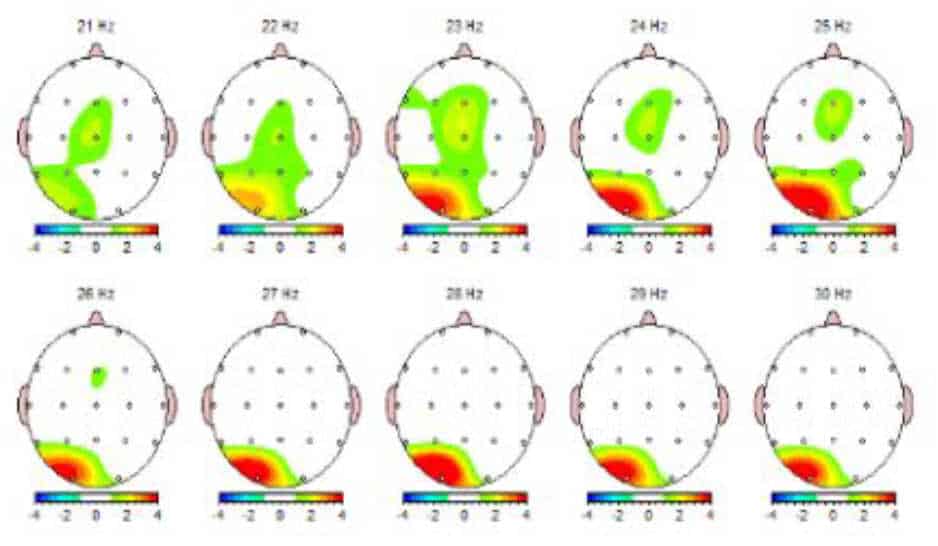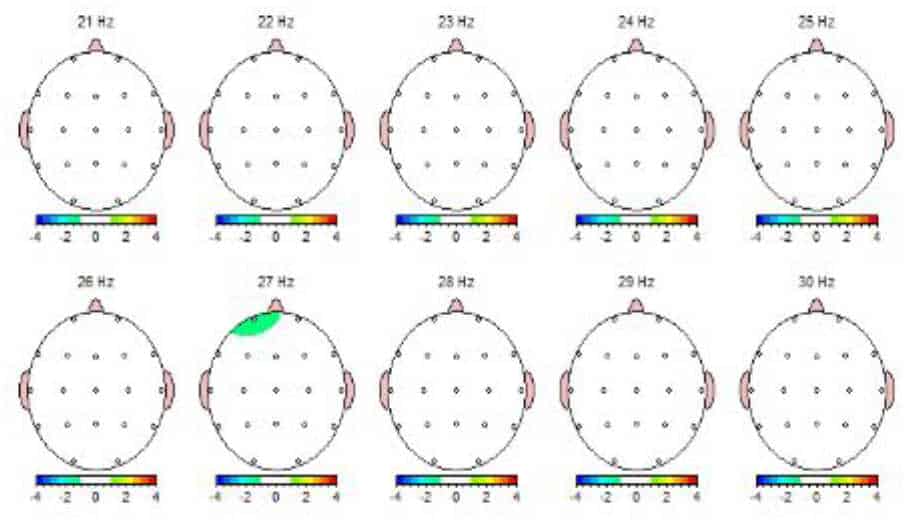Neurofeedback For Traumatic Brain Injury
Neurofeedback can reduce TBI symptoms such as memory problems, brain fog, inattention, anxiety, sleep problems, and irritability.
Table Of Contents
- Neurofeedback TBI – Does It Help
- What Is TBI
- What Is CTE
- What Is Coup-Contracoup
- Where Does TBI Appear In The Brain
- How Does Neurofeedback Help TBI
- How Many Neurofeedback Sessions Are Needed For TBI
- Is TBI A Neurological Disorder
- Can TBI Be Cured
- What Are The Main TBI Complaints
- How Does TBI Affect Daily Life
- TBI Associations

Neurofeedback For TBI Case Study
Download the Neurofeedback For TBI Case Study in pdf
Neurofeedback TBI – Does It Help?
Traumatic Brain Injury (TBI) is a chronic condition and may affect an individual through the course of their lives. When administered properly, neurofeedback may assist with some of the complaints associated with Traumatic Brain Injury (TBI), such as memory problems, brain fog, inattention, anxiety, sleep problems, and irritability.
What Is Traumatic Brain Injury (TBI)
TBI is an acronym for Traumatic Brain Injury, also known as a concussion. The injury occurs when the brain impacts the skull’s inside, causing the brain to shift and move violently.
Moreover, traumatic brain injuries occur when the skull rapidly decelerates or strikes another object. The injured areas of the brain determine what types of deficits someone might suffer.
mTBI (mild TBI) can occur at any age and is more common in athletes and military personnel. Numerous studies have demonstrated that mTBI associates with early-onset dementia even thirty years after the incident.
Before and After TBI QEEGs
Below are two QEEGs (Brain Scans) for an adult with symptoms of TBI

QEEG Scan Before Neurofeedback For TBI

QEEG Scan After Neurofeedback For TBI
What is CTE?
CTE is an acronym for Chronic Traumatic Encephalopathy and is not the same as mTBI. CTE is a chronic progressive disorder that occurs after multiple concussions. CTE was formally known as Dementia Pugillistica or Punch-Drunk Syndrome.
CTE was first noticed in people who engaged in hand-to-hand combat and received blows to the head. In CTE, an autoimmune process is triggered in the brain that causes “neurofibrillary tangles.” These tangles become calcified and cause significant and severe problems. Under current guidelines, CTE may only be diagnosed via post-mortem examination of cerebral tissue.
What is Coup-Contracoup
Have you ever considered the inside of your skull? Your brain is the only organ in your body protected by bone on the outside. All of the other body organs rest on the bone but are not encased and protected by bone. This is superior protection for your brain.
Inside the skull, your brain floats in a bath of fluid called cerebrospinal fluid (CSF). This CSF protects and nourishes your brain. Suppose the skull is rapidly and forcefully shifted in a specific direction. In that case, the CSF creates a fluid wave, causing the brain to impact the inside of your skull first towards the force’s direction and secondarily injuring an angular vector on the opposite side of the force. The first impact is called the coup. The second impact is called the contra-coup.
Where does mTBI appear in the Brain?
In mTBI, the area of injury depends on the location in which the brain was struck. Using QEEG, it is possible to locate the areas of an mTBI. In addition to specific brain regions affected, forces cause diffuse axonal injury by stretching and tearing the microscopic junctions between neurons in the brain. There are slowing areas in a typical mTBI representing penumbras of hyperpolarized cells oscillating in the frequency of delta or theta. Think of these areas as being a sleeping part of the brain that will not wake up.
This creates an area of dysfunction that is related to the area affected. For example, suppose the brain impacts the inside of the skull on the left front behind the eye. In that case, the prefrontal cortex might be injured, causing executive functioning, impulsivity, and attention problems. The brain would then shift back and impact the skull’s right rear interior, causing injury in the visual system on the right.
Unfortunately, the underside of the skull is not smooth. It is somewhat rocky and bumpy like the Grand Canyon. When the brain subluxates from the greater wing of the sphenoid bone, the anterior temporal horns rest inside and scrape across the middle cranial fossa. When the brain moves over this ridge on the skull’s internal underside, the temporal lobes get injured, causing an “ear-muff” type pattern on QEEG that is pathognomonic for mTBI. The example above would appear on a QEEG as slow waves in the left front and right back of the brain with decreased coherence and two circular spots over the ears where the brain shifted.
How Does Neurofeedback Help mTBI?
Neurofeedback helps mTBI by retraining the brain to move back towards a regular electrical pattern. This may take several sessions as mTBI impairs the brain’s ability to learn new information. By targeting the areas of injury and assisting the “sleepy” areas in waking up, NF can improve some complaints associated with mTBI.
How Many Neurofeedback Sessions Are Needed For TBI?
This is not easily answered without a QEEG. Generally, our clients require 20 sessions to reach a significant improvement in their daily functioning. However, in mTBI, the brain may have multiple dysregulated sites and areas of connectivity unbalanced. Although 20 sessions may improve some symptoms associated with mTBI, additional booster sessions may be required after the first set of twenty sessions.
Is Traumatic Brain Injury A Neurological Disorder?
Yes, TBI is considered a neurological disorder.
Can Traumatic Brain Injury Be Cured?
Like most neurological disorders, mTBI is not curable. Although rehabilitation and time can assist with complaints associated with the injury, effects may be lifelong. Unlike most neurological disorders, mTBI is preventable, and risk can be reduced by wearing a helmet or refraining from impact sports.
What Are The Main TBI Complaints?
The symptoms of mTBI vary and may present after an injury or years later.
Some of the more common complaints associated with mTBI include:
- Memory loss (typically around the time of the injury)
- Sleep problems
- Headaches
- Ringing in the ears (Tinnitus)
- Auditory Processing Problems
- Non-Verbal Learning Disorders
- Libido loss
- Decreased or Loss of Olfaction (smell)
- Visual Disturbances
- Attention Problems
- Executive Function Problems
- Speech Problems
- Emotional Ups-and-Downs
- Excessive Crying or Laughing
- Anxiety
- Difficulty Learning New Information
- Socially Inappropriate Behavior
- Balance Problems
- Difficulty with Finances
- Organizational Issues
- Rumination and Racing Thoughts
- Decreased Facial Expression and Resting
- Facial Tone
- Increased Speech Latency
Generalized inflammation of the body and non-specific organ-related complaints may also occur as multiple concussions are associated with an autoimmune reaction that becomes systemic.
How Does Traumatic Brain Injury Affect Daily Life?
TBI affects all realms of functioning, including social, occupational, academic, physical, and recreational. mTBI can also impair an individual’s ability to complete daily life activities such as showering, dressing, and managing household chores.
Are There Any Traumatic Brain Injury Associations?
Reach Your Peak Potential With Myneurva
Common Neurological Disorders
Meet The Neurofeedback Experts
Featured Neurofeedback Articles
Call Us
Hours
M-F: 7am - 5pm EST
S-S: Closed

